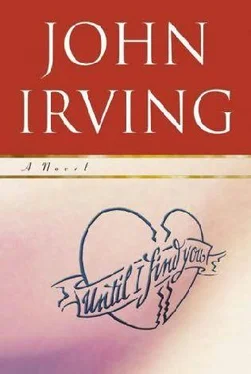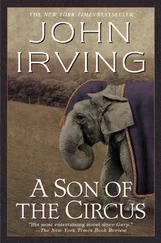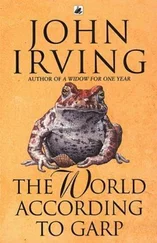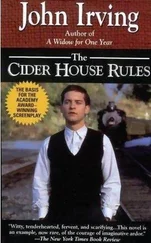The van skids past the stopped car in a four-wheel drift—one of the stoned snowboarders frantically giving Ethan and Nicole and Jack the finger. Ethan and Nicole are visibly shaken by the near-collision, but Jack never even flinches.
The movie went downhill from there. When they showed film clips from My Last Hitchhiker, they always showed those first two close-ups of Jack.
When the film was released, Jack was twenty-four. Justine was twelve years older—an attractive older woman to Jack’s transvestite hitchhiker.
They have one really hot scene later in the movie. Jack-as-a-girl is in the women’s room at a ski-resort restaurant, fussing with his makeup in the mirror. Justine-as-Nicole comes out of a stall, straightening her dress. They both look pretty good, but Justine is thirty-six, and it’s no secret who looks better.
“What ride are you trying to catch now?” she asks Jack.
“It’s called dinner,” he replies.
“Do you buy your own lift tickets?” she asks.
“Skiing is an expensive sport,” Jack says, with a shrug. “I try not to buy my own dinner.”
Justine is looking Jack over when she says, “And what do you do after dinner?”
“I talk him out of it,” he tells her. “What do you do after dinner?”
At this point in the film, Justine-as-Nicole is still with Ethan—and she’s not happy about it. “I try to talk him out of it,” she admits, a little sadly.
That’s when Jack kisses her on the lips. It’s disturbingly unclear if he’s kissing her as a woman or as a man. But what does it matter? My Last Hitchhiker would wind up being a favorite of Justine Dunn fans. After she was so tragically disfigured and disappeared from the big screen, Justine gathered an army of fans. Crazies, for the most part—the kind of moviegoers who made heroes out of people killed or maimed in stupid accidents.
As for Jack, it was the start of something he felt powerless to stop. As an ex-wrestler, he knew how to lose weight, and how to keep the pounds off—he had kept himself small. He was a lightweight, a former one-thirty-five-pounder; he had a lean-and-mean look, as Michele Maher (the real one) had observed.
“Androgyny seems to suit you, Jack,” Myra Ascheim would tell him, after Wild Bill Vanvleck had made Jack an aberrant sex symbol—a sexy guy who was, if not to every taste, arguably more sexy as a girl.
Jack’s role as the transvestite hitchhiker was three years before Jaye Davidson’s debut as Dil in The Crying Game— and though Neil Jordan was a first-rate writer and director, and everyone knew Wild Bill Vanvleck was not, Jack Burns did it before Jaye Davidson did.
Granted, it was not a role Jack could count on growing old in. (Hollywood didn’t exactly have a plethora of parts for foxy but graying Mrs. Doubtfires.) Nevertheless, it was a good start. Jack wasn’t as famous as Emma, whose first novel had been a New York Times bestseller for fifteen weeks before My Last Hitchhiker opened in “select theaters.” And Emma was far more famous in Toronto, where there was no one more famous than a natural-born Canadian who made it big in the United States. But to hear Jack’s mother talk, not to mention Mr. Ramsey, you would have thought that Jack Burns had eclipsed Jeff Bridges (as a transvestite, anyway) and was even bigger box office than Harrison Ford.
My Last Hitchhiker was an awful movie, but Jack’s two close-ups caught on—the parody on Saturday Night Live didn’t hurt—and the candlelight vigil outside the UCLA Medical Center, where Justine Dunn lay in a coma from her awesome wreck, made a talk-show celebrity out of Wild Bill Vanvleck, who spoke glowingly of Jack Burns.
Of course he did. Myra Ascheim had committed Jack to making another movie with The Mad Dutchman. By singing Jack’s praises for what had been less than a supporting-actor role, Wild Bill was promoting his next film, which, alas, would not achieve the cult-classic status of My Last Hitchhiker. Although Jack was the male ( and female) lead in this one, his second B-movie for The Remake Monster, there was no Justine Dunn counterpart—no celebrity actor or actress who suffered a well-timed car crash and lasting, career-ending disfigurement. (No unmerited publicity, in other words.)
Meanwhile, before his follow-up appearance as a cross-dresser in another Vanvleck remake, Jack was the beneficiary of Emma’s publicity for The Slush-Pile Reader, which was considerable. A People magazine piece, in which Emma referred to Jack as her roommate, included photographs of them looking cozy together—these in addition to that familiar movie still of Jack transforming himself from a woman to a man, the telltale smudge of pale-purple lip gloss lending to that corner of his pretty mouth the wanton look of someone who’s been roughly kissed.
“It’s platonic love,” Emma was quoted as saying. “We’re just roommates.” In another interview, Emma said: “I like taking pictures of Jack. He’s so photogenic.” (This was published with a photograph of Jack, asleep.)
Maybe only Alice and Mrs. Oastler believed that Emma and Jack weren’t lovers, and Jack knew that Leslie had her doubts. Lawrence, that fink, had his doubts, too. Emma told Jack that she ran into Lawrence having lunch at Morton’s. Lawrence had lost his job at C.A.A., but not to hear him tell it; he bullshitted Emma about starting his own talent-management company and wanting to be “unencumbered.” (Like Myra Ascheim, whom he’d so confidently called a has-been.)
Lawrence was “unencumbered” at lunch, Emma observed; he was just a liar who was out of a job. Morton’s—the enduring and expensive celebrity hangout on Melrose, in West Hollywood—was not a place where you wanted to be eating lunch alone. No deals were going down for Lawrence, Emma concluded; maybe that’s why he got a little crude with her. “Do you still claim you’re not banging your boyfriend?” he asked, meaning Jack. “Does Jack go on dates as a girl?”
Emma knew she could kick the crap out of him, but she let it pass. “You’re such a loser, Lawrence,” was all she said. It was sufficiently gratifying to her that Lawrence didn’t seem to know he was in one of the least prestigious booths.
Emma had resigned from her studio job as a script reader a couple of months before The Slush-Pile Reader was published. “Screenplay development just isn’t for me,” she’d told them, but one of the studio execs got hold of a set of her galleys. There was a kind of code in Hollywood, too vague and virulently denied to be a rule: you were not supposed to call an asshole an asshole, not in writing. It was the dim understanding of this studio exec that Emma had violated the code. To punish her, the exec copied Emma’s script notes and distributed them to the rejected writers’ agents. But the punishment backfired: once you start making copies, everyone sees them. The execs at other studios read Emma’s notes; after all, many of the screenplays in question were still making the rounds.
A few of those scripts were now films in production; a couple were in post-production, meaning they’d miraculously been shot, and one had recently been released, to tepid reviews. Naturally, the reviews weren’t as insightful or well-written as Emma’s notes on an earlier draft of the screenplay. Even the rejected writers’ agents liked Emma’s notes—two of them offered her a job.
A celebrity talk-show host at an L.A. radio station asked Emma’s permission to read some of her script notes on the air. “Sure,” Emma said. “Everyone else has read them.” (More publicity for The Slush-Pile Reader— not that Emma needed it.)
Читать дальше












